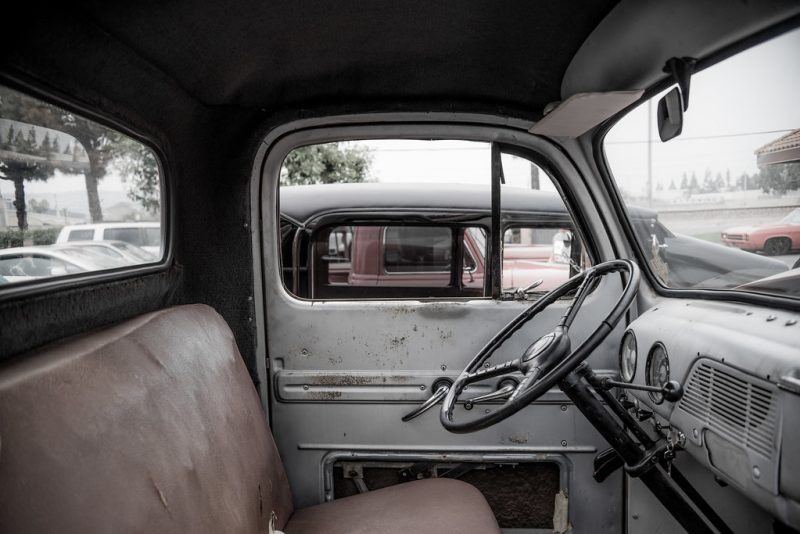
A classic film of the 1970s’ – with its lonesome cheating heart in Texas.
Film director Peter Bogdanovich died on the 6th of January this year – the news of which brought to mind what I would consider as his finest film the – dare I say it – iconic, ‘Last Picture Show’, a drama shot in black and white in the fictional town of Anarene a real-life ghost town in Archer County, North Texas. Then, the connections kept coming – the film was based on the semi-autobiographical book of the same name written in 1966 by Larry McMurtry, famed author and screenwriter father of James, sometime actor, full-time musician who among other credits acted in Bogdanovich’s film, ‘Daisy Miller’. Both father and son have made a living and gained great artistic success by way of their various depictions of Texas, its people and its deadening landscape. After divorce, McMurtry married Ken Kesey’s widow – Kesey having been a lifelong friend who got a mention a while back in the, ‘Paperback Riders’, series
Bogdanovich was considered part of the ‘New Hollywood’, of the 1970s although in truth he had more failures than successes and was something of a traditionalist as a filmmaker looking backwards more than forward. It might be that he became better known as the sometime partner of Dorothy Stratten, a young actor who was murdered by her estranged husband in a case that became something of a scandal. Bogdanovich features in the book, ‘Easy Riders / Raging Bulls’, which some consider the best overview of this cinematic watershed, though many of those that featured feel that Biskind was somewhere between a fantasist, liar and a distorter of the truth. Personally, I think it’s an excellent book and ripe for a feature in the, ‘Paperback Riders’, series. Featured directors include Robert Altman, Hal Ashby, Francis Ford Coppola, Brian De Palma, William Friedkin, George Lucas, John Milius, Bob Rafelson, Paul Schrader, Martin Scorsese and Steven Spielberg. They represent a huge amount of talent and were responsible for films that moved the cinema forward in a big way and created works of lasting importance.
‘The Last Picture Show’, was nominated for 8 academy awards and secured two for best supporting actor roles as well as in 1998 being selected by the Library of Congress as a film worthy of preservation in the United States National Film Registry for being, ‘culturally, historically or aesthetically significant’. It was also a commercial success grossing $29 million on a budget of $1.3. Good business – and whatever New Hollywood brought to the party backers were still always looking for good returns – that being one reason why Bogdanovich’s career faltered.
The story follows a period in the young lives of Sonny Crawford played by Timothy Bottoms and Duane Jackson played by Jeff Bridges as they approach graduation (which seems to take place in their early 20’s judging by the look of the two actors). Both are attracted by the town belle Jacy Farrow played by Cybill Shepherd, who leaves a trail of destruction behind her such that even her own mother warns the menfolk away. For all three actors this was their breakthrough into the big time – or in Bridges case, major stardom
It’s a complicated and episodic plot and as well as being filmed in black and white the location perfectly depicts a down at heel dead-end town where various sexual imbroglios are played out by the bored residents – and pretty much all end in tears. Jacy keeps the menfolk guessing whilst Sonny forms a relationship with Ruth Popper the embittered frustrated wife of the school sports coach (‘a good old boy’ we are told – and he probably is) who visibly blooms and comes alive in Sonny’s arms. And in some ways, it’s the most honest relationship in the film until Sonny falls temporarily into Jacy’s net only for it all to end predictably. Jacy is very much the daughter of her mother Lois whose lover, a shadowy figure by the name of Abilene, (employed by her husband) also has sex with Jacy in a thoroughly passionless and dispiriting episode on a pool table. Liaisons throughout are furtive and generally lacking in any soul, passion or grace and could rarely be called lovemaking. They reach their nadir when young Billy, who is mute throughout the film is taken to a local prostitute as a supposed act of generosity by his friends. All goes wrong and he ends up humiliated and with a bloody nose.

Billy is taken home to what we assume is his father, Sam the Lion, who in disgust bans all the boys from his cafe, pool hall and cinema. During this and other episodes, Sonny looks on, aware that all is not well but also never quite intervening. Bottoms wordless acting at these times is impressively expressive.
Sam the Lion is the moral heart of the film – and was Lois Farrow’s one-time lover, and she is well aware that she let a good man slip through her fingers. Sam dies while Sonny and Duane are in Mexico and he leaves the cafe and cinema to their respective proprietors and the pool hall to Sonny.
Billy is knocked down and killed in a random street accident and Sonny, appalled at the lack of concern shown by the onlookers is devastated and loses control, eventually returning to Ruth Popper in a semi-broken state. She initially vents her rage at his selfish behaviour before seeming to accept him back again – a final scene of possible redemption where the film ends. This though is not before Duane goes off to fight in Korea. The night before leaving he goes with Sonny to watch the last film at the soon to close cinema – ‘Red River, starring John Wayne in scenes if not in Texas then redolent of its past times (in fact mostly it was shot in Arizona). This is the final act of reconciliation between the two after a vicious fight, over Jacy – who else?

There is no one heart to Americana or America for that matter, but one of the many is surely in the Texas boon-docks where cowboy boots and hats, Levis, oil, cars, dust, and small-town sexual intrigue are the order of the day. The continuity of the film is at times almost clumsily episodic with none of the deft cuts from scene to scene that we expect from modern cinema. Part of this may also relate to the fact that the film was shot almost exclusively at eye level – giving a certain defined perspective. This with the black and white photography gives the film a feeling of a time long past. 70 years ago to be precise. If someone like James McMurtry couldn’t write a convincing concept album, to follow up on his father’s book, around these events then I’d eat my hat – as long as it wasn’t one of those big ones they wear in Texas.
There’s one final link for our readers – the soundtrack, featuring Hank Williams, Bob Wills, Hank Snow and Lefty Frizzell among others. They aren’t the only musical presence but do represent a good third of the total and there are several scenes bracketed by the spinning of a 45 (record that is) on a jukebox. Williams lonesome wail makes the perfect accompaniment to the activities of the protagonists and Jacy his perfect desirable, but heartbreaking woman. Also present lending their vocal talents are Tony Bennett singing, ‘Blue Velvet’, as well as Frankie Laine, Kay Starr, Jo Stafford, Johnnie Ray and Eddy Arnold.
Bogdanovich’s first film was, ‘Targets’, worth seeking out in itself. In 1990 he directed, ‘Texasville’, a follow up to, ‘Picture Show’, with the same cast, set 33 years on from the original. It cost $18 million and grossed $2 million. Nuff said!



Re: ‘Texasville’, not quite “Nuff said”. Whilst I acknowledge that the film is not the classic of ‘The Last Picture Show’ it is by no means the clunker that you suggest and, speaking as one who has read all of McMurtry’s books, I would put this one right up there amongst the best.
I suggest that part of the problem is that the stage of life of the main characters has changed and thus the story is more reflective and tempered with the acceptance (or not) of the mundanity of their lives.
Hi Nigel – perhaps I was less than clear in my comment but my research would suggest that Texasville wasnt a critical success – which to be fair is only one measure – and it certainly wasn’t a commercial success, in fact on those figures it was a bit of a disaster. It’s in no way a criticism of McMurtrys book but much more a comment on Bogdanovich’s film and his rather up and down career as a director. LPS is a true classic and would always be likely to put any follow up in the shade